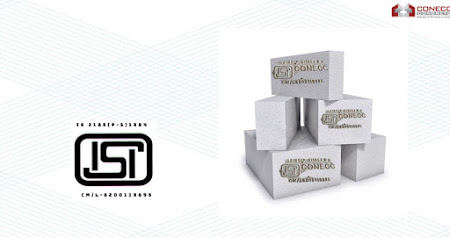AAC Blocks Karnataka
AAC(Autoclaved aerated concrete) blocks are the future of the construction sector. Lightweight AAC Blocks are an important construction material nowadays, as it increases thermal insulation properties and also reduces the thermal load coming on the building. it helps to reduce the load of the building because these blocks are very lightweight.
Different Sizes of AAC Blocks
600mm x 200mm x 100mm
600mm x 200mm x 150mm
600mm x 200mm x 200mm
600mm x 200mm x 225mm
Why AAC Blocks are Necessary
- Cost-saving
- High strength
- less weight
- Earthquake resistant
- easy to install
- soundproof
Difference between AAC blocks, Red bricks, And CLC blocks.
Size:- AAC (600mm x 200mm x 100mm), Red bricks(225 mm x 112.5 mm x 75 mm), CLC (24 x 8 x 9 Inch)
Raw Material:- AAC (Fly-ash, Gypsum, Lime, Cement, Aluminium powder, and Water), Red bricks (Silica, Alumina, Lime), ClC (Slurry of cement, Fly-ash, Water and pre-formed stable foam).
Eco-Friendly:- AAC (Pollution-free and high energy consumption), Red bricks (Not Pollution-free and low thermal and low sound insulation), CLC (Pollution-free but no primary energy consumption)
Water Absorption (%):- AAC (30% (Out of 1000kg/m3 dried density), Red bricks (It absorbed less than 7%), CLC (12.5% (Out of 1000kg/m3 dried density)
All types of blocks are new in the construction sector but red bricks are very old in the construction sector. So according to the comparison above only AAC blocks & CLC blocks are considered eco-friendly. AAC blocks have an add-on advantage and have high compressive strength as compared with CLC blocks. Read more for more details

Comments
Post a Comment